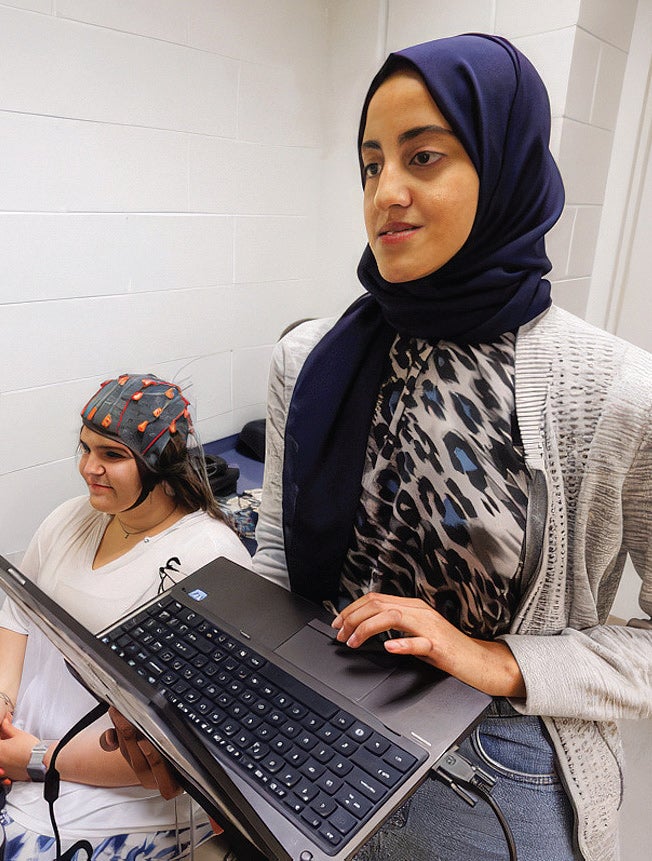Engineering professor looks for traffic jams on the brain’s highways
The human brain is like a complex group of highways, and despite a good road map, traffic jams may develop.

Marwa Antar, a second-year graduate student in biomedical engineering, works with a student wearing a cap that measures electrical activity in the brain.
Sunghan Kim, an associate professor in the ECU Department of Engineering, hopes a better method of understanding how these brain highways connect and affect one another could help diagnose cognitive brain issues.
“My research team is trying to develop a platform that can monitor subtle changes of the brain due to various cognitive deficits such as sleep deprivation, dementia, anxiety, schizophrenia, ADHD or just normal age-related cognitive deficits so that they can be used to diagnose or at least help doctors and nurses quantify the changes,” Kim said.
Using an electroencephalogram to measure electrical activity in the brain, Kim and his team of students are looking at functional connectivity — the traffic flow of those brain highways — in the entire brain, not just one part of it. Changes over time could indicate a problem or potential problem, but finding them isn’t easy.
“You have to do a lot of processing before you can quantify the changes, because these are really subtle changes,” Kim said. “Making sense out of an EEG is more or less like trying to understand when a (child) is talking to (their) mom in a huge basketball arena when everybody is cheering for his or her team.”
Once a baseline is established, the subject is retested after getting little to no sleep.
So why is this important? Kim points out changes along the brain’s highways could mean trouble — dementia, addiction, schizophrenia, ADHD, anxiety or Alzheimer’s disease.
“If anything happens different in the brain, the EEG is going to look differently,” Kim said. “As you get dementia, as you get anxious, as you get depression, the difference between meaningful stimulation versus meaningless stimulation becomes less and less and less.”
Kim hopes the use of EEG and functional connectivity analysis can lead to earlier diagnosis and better patient outcomes.
“You can do some sort of intervention. You can change your diet. You can do more exercise. You can do some sort of mental training,” he said. “There are a lot of dementia medicines that are being developed, and those aren’t for the last stage but before the onset so you can slow it, so you can delay it. So, instead of spending the last 10 years of your life in, say, an assisted-living center or senior center, you can delay it and maybe spend just six months or a year toward the end of your life.”
– Ken Buday
